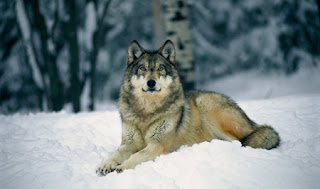Los perros , Canis Lupus familiaris, son sociables y muestran una enorme variedad de comportamientos frente a las personas u otros animales.
El lobo gris - parece ser - el ancestro más probable de todas las razas caninas actuales, pero en la actualidad los perros han evolucionado y existen de todos los tamaños y características; se pueden llegar a contabilizar más de 500 razas distintas.
La domesticación ha influido mucho en la evolución del perro. No solo ha cambiado sus características físicas, sino también, su agresividad, haciéndolo más dócil y manejable.
Como animal doméstico lleva acompañando al ser humano desde el Paleolítico. Es inteligente por su capacidad para pensar, aprender e incluso resolver problemas.
Con frecuencia, al observar la actitud de un perro podremos adivinar muchas cosas: qué les pasa o qué quieren "decirnos."
La postura de su cuerpo - la posición de las orejas - y los movimientos de la cola, son indicadores de lo que quiere expresar nuestro perro.
Ejemplos:
a) La cola en movimiento, las orejas gachas y la boca abierta pero relajada son signos de alegría.
b) La boca cerrada, las patas rectas, la cola semierguida - más bien hacia abajo- , movimientos lentos, y la mirada fija en lo que observa, quiere decir que está estudiando la situación.
c) Las patas delanteras bajas y el lomo arqueado demuestra que están contentos además de una "invitación" a jugar con ellos. Cuando están contentos también suelen ladrar.
En el post de mañana hablaremos sobre el Bichón Maltés.
The dogs, Canis lupus familiaris, are sociable and show a wide variety of behaviors towards people or other animals. The gray wolf - seems to be - the most likely ancestor of all dog breeds today, but now the dogs have evolved and are of all sizes and types can reach more than 500 races counting different. Domestication has greatly influenced the evolution of the dog. No one has changed their physical characteristics, but also, his aggressiveness, making it more docile and manageable. As accompanying pet leads man from the Paleolithic. It's smart for their ability to think, learn and even solve problems. Often, by observing the behavior of a dog can guess many things: what happens or what will "tell us." The position of his body - the position of the ears - and tail movements are indicators of what we want to express our dog.
Examples:
a) The moving tail, ears laid back and relaxed open mouth but are signs of joy.
b) The closed mouth, straight legs, tail half upright - rather down-, slow movements, and staring at what you see, it means you are studying the situation.
c) The lower front legs and arched back shows they are happy besides an "invitation" to play with them. When you are happy also tend to bark.
In tomorrow's post will talk about the Bichon Maltese.



No hay comentarios:
Publicar un comentario